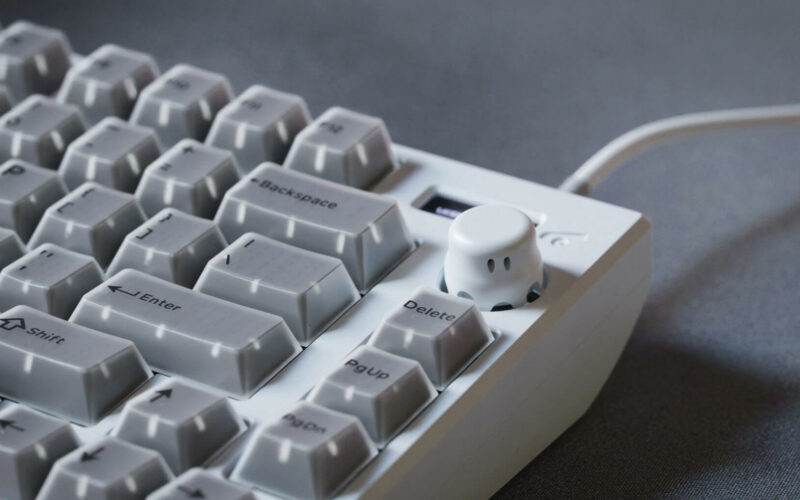75 percent mechanical keyboards are a popular new type of keyboard. They have almost as many keys as a tenkeyless (no numpad) keyboard but take up much less space.
If you want a smaller keyboard for comfort, portability, or just because it looks better, but you can’t live without the arrow keys and Function row that even the best 60 percent and 65 percent size keyboards have to leave out, then 75% mechanical keyboards might be the right size for you.
In this piece, we’ll talk about the 75% mechanical keyboards we love the most. After hundreds of hours of research, building, and testing.
We’ve narrowed down dozens of the best mechanical keyboards to just seven recommendations that we’re sure will be great for gaming, typing, programming, and more. These include both wired and wireless options that work on both Mac and PC.
Click on the keyboard you’re interested in from the list below or just keep scrolling!
Keychron Q1 Pro – My Favorite Pick
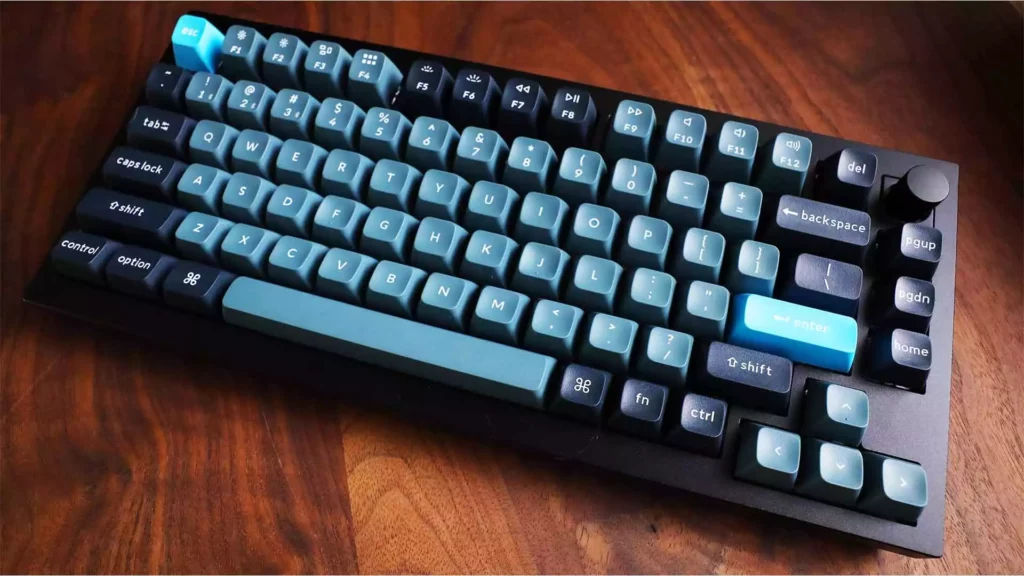
This is definitely the best advice for 75% keyboards (and all keyboards!).
With the Keychron Q1 Pro, the keyboard comes fully changed and put together, just like a custom keyboard.
You don’t even have to get your hands dirty.
You’ll only have to work hard on:
Unbox keyboard
Plug computer in
That’s it, then.
Right out of the box, you get a keyboard that sounds and feels good.
There aren’t many computers that don’t need any changes. And the ones that already exist cost more than twice as much as the Q1 Pro.
The Q1 Pro is 75% the size of the Q1, so it has all of the feature row, arrows, and (sort of) navigation keys, plus a knob if you’re feeling brave.
Does Bluetooth help you? The Q1 Pro comes through.
Since they are made of PBT plastic, which is thicker and more lasting, the keycaps won’t get dirty and oily.
You’re in luck if you want to type as smoothly as butter. The switches on the keyboard are already oiled, which makes each key press so much better.
Plus, you never have to take your keyboard apart, pry open each switch, and brush lube inside it yourself. That is such a gross thing to do.
The keyboard knows how to do “the bounce” as well.
The Q1 Pro gives you a typing experience that is both flexible and springy. It’s much easier on the joints of the hands and fingers.
And it sounds really great. When you type quickly, like I know you do, your keyboard won’t make that annoying pinging sound.
It can do this because of two important things:
The plate made of polycarbonate, or PC. It’s thinner and more bendable, so typing on it doesn’t feel as hard as typing on a steel place.
The case was put on the seal. Gaskets, which are small pieces of rubber, are put in the case to improve the sound and feel when the keys are pressed. Yes, there is a Delete key, in case you were asking. God bless the sky.
The Q1 Pro is the best choice if you want to buy a really nice keyboard and then never think about it again.
Glorious GMMK Pro
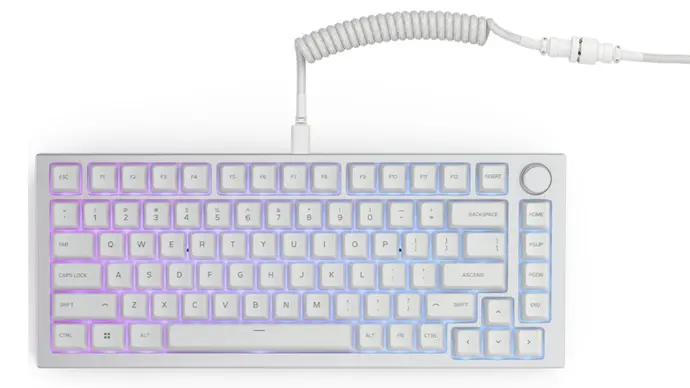
The Glorious GMMK Pro is a great keyboard, but it needs to be put together a little bit. The skills you need are much more “LEGO” than “jet engine” or “computer” skills. All you have to do is push switches into the bare board and then press keycaps onto the switches.
Glorious was kind enough to send over a full set, including keycaps, their impressively tactile “Panda” switches, and a fancy curled USB cable. However, you should be able to use pretty much any Cherry MX-style switch in these hot-swappable sockets, giving you a lot of control over how the keyboard feels to use.
No matter which buttons and keycaps you choose, the solid aluminum case, clipped and oiled stabilisers, gasket-mounted plate, and fancy rotary encoder (aka programmable knob) make a great first impression. The RGB back-and-side lighting and key bindings can all be changed in software.
This can be done in the Glorious Core software or with programs like QMK Toolbox if the open-source QMK firmware is loaded. Installing this firmware also cuts input latency by a lot (RTings recorded 10ms instead of 26ms), but it disables RGB backlighting, which is a shame.
This problem should be able to be fixed in the future, either by adding RGB to the QMK firmware or by reducing the input latency of the default firmware. For now, though, it’s the only problem with the board that’s worth mentioning, and I didn’t have any problems using it for games.
The GMMK Pro is a tempting idea because it brings the nerdy fun of custom mechanical keyboards to a bigger audience and lets you type in a really great way right out of the box. If the few bugs in its software can be fixed, Glorious will have made what many people consider to be the perfect 75 percent keyboard.
Keychron K2 / K3
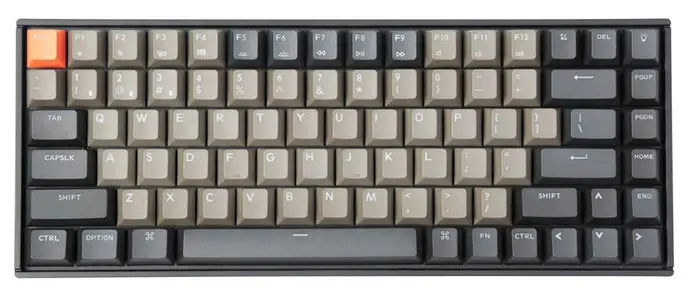
When it comes to value, the Keychron K2 sets a very high bar. It’s a well-built keyboard with a lot of switch and backlight choices that comes at a very good price.
It comes with both Mac and Windows keycaps, as well as a Function row like on a Mac. This makes it almost perfect for Macs, but it also works fine on Windows and Linux computers.
The standard K2 has Gateron Red, Blue, or Brown switches, a plastic frame, and white key backlighting.
For a little more money, you can get RGB backlighting or RGB backlighting with an aluminum frame. Even if you choose the most expensive choice, you’re still getting a great deal.
Also worth noticing is the $74 Keychron K3. This keyboard is even lighter and easier to carry than the K2 because it has low-profile Gateron or Keychron Optical switches instead of full-height mechanical switches.
This makes it feel quick and like a laptop, which I really like. Find out more about the K3 and other great game keyboards of all sizes in this article.
NZXT Function MiniTKL
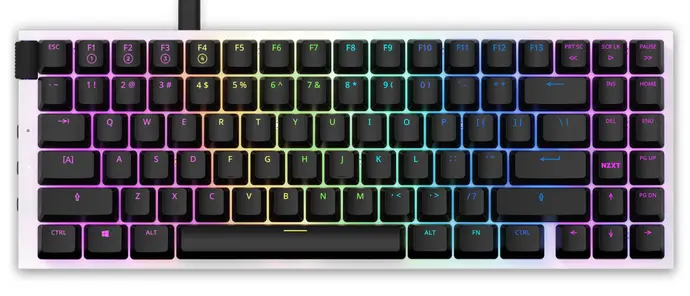
The most interesting of the three new mechanical keyboards from NZXT is the Function MiniTKL. This is because the well-known PC case maker brought its clean design to a new product category.
Most 75 percent keyboards only have one column on the right side of the board, but this one has two. It also has a volume wheel on the left side of the frame.
I think this is easier to reach than a wheel in the top right, at least when you have one hand on the mouse and the other on WASD. It’s also very smart to include the wheel without taking up any key space.
Aside from this, the keyboard is pretty ordinary, but it does most of what you need it to do: it has hot-swappable Gateron switches, RGB lights that can be set with CAM software, and you can choose between a proper US layout and a proper UK layout.
Because the layout isn’t standard, it might be hard to find custom keycap sets, and the usual ABS keycaps might not feel as nice as PBT ones, but at least the bottom row is standard and the USB-C cable can be removed.
Overall, this is a good first attempt from NZXT, and you should check it out along with the larger Function Tenkeyless and full-size Function.
iQunix Keyboard
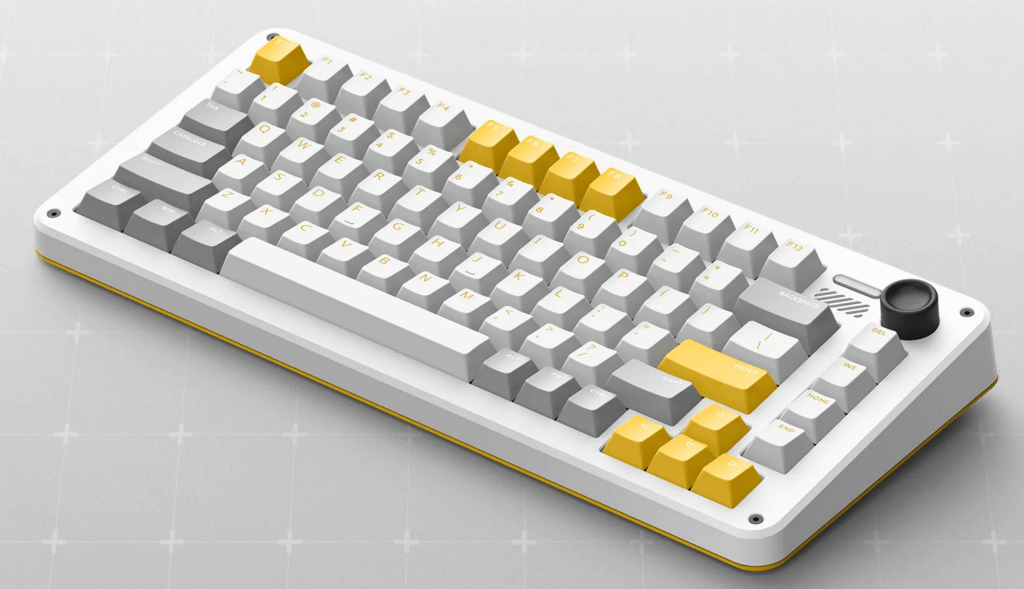
The iQunix 80 line is made up of two new 75% keyboards: the A80 Explorer, the L80 Lime, and the ZX75, which is the newest and most notable of the three.
The iQunix 80 series is the best-looking 75% keyboard because it has the most high-end features already built in.
The case is made of high-quality Polycarbonate plastic and is well-designed. It has two levels of sound-dampening foam, Tri-mode connections, high-quality keycaps, and sockets that can be switched out quickly.
Polycarbonate plastic cases are strong and sound better than ABS plastic cases because they are deeper.
The case has foam on the bottom of the tray-style case and between the PCB and the plate to reduce noise. This will help cut down on hollowness and resonation, and it’s not something that even the most expensive luxury boards have.
The wireless link is also stronger and more stable with a plastic case than it would be with a metal case.
The keyboards in the iQunix 80 line have three ways to connect: USB-C, Bluetooth 5.0, and fast 2.4ghz wireless. In Bluetooth, the polling rate is 125 Hz, but in wired and 2.4 GHz modes, the polling rate is 1000 Hz. This gives a faster response time of 1 ms, which is good for games and general button mashing.
The case doesn’t have a place to put the antenna, which is a bummer, but the keyboard works well for a wireless one.
Hot-swappable plugs are what make this keyboard really stand out. Hot-swappable sockets are a new feature on iQunix boards. They give you freedom by letting you remove, change, and replace the switches that come with the board without having to solder or de-solder.
If you choose a board with hotswap, it will be easy to do things like grease and cover your switches or swap them out for something else.
Because the ports are 5-pin, you can use either 3-pin or 5-pin Cherry MX switches. The plugs have the LED facing North, which means that thicker Cherry-profile keycaps may hit your switch housings.
North-facing switches work well with backlit keycaps, which is a bonus, but many backlit keycap sets don’t work with the 75% layout.
The stabilizers are “costar style,” not “Cherry style,” so you won’t be able to change them as much or use the same keycaps without the adapters that come with the keyboard.
The keycaps that are given are OEM model Dye-sublimated PBT keycaps. This means that there won’t be any interference or collision problems, the keycaps won’t get shiny and slippery over time, and the names won’t wear off either.
Both the A80 and the L80 have the same list of features. The only difference is in how the case is made and how the Function-row is shown.
The L80 has a bigger forehead, while the A80’s forehead is taller and curves the Function-row, making it look more like a “battlestation” keyboard. Both keyboards have fun colors and patterns that are inspired by the past.
The iQunix 80 series mechanical keyboards are what you need if you want a high-end, feature-packed 75% keyboard with a unique look and room for customization.
Vissles LP85
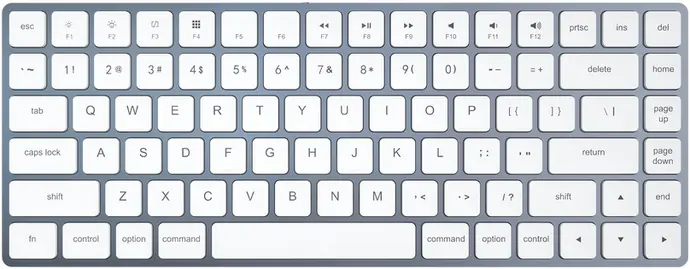
The Vissles LP85 is basically a mechanical version of Apple’s popular Magic Keyboard that can use RGB. It has a low profile, it clicks, and it looks as good as it feels.
It works well for games, working, and using on the go. It can be used with a cord or via Bluetooth, and it works with both Mac and Windows layouts.
Even though it is only about 11mm thick, the quality of the build is amazing. Interestingly, the switches here are optical, which lowers input delay because the keyboard doesn’t need to include the ‘debounce’ delay that is needed with traditional mechanical switches.
The only big problem I have with the LP85 is that, since the Fn key is on the left, it’s easy to press Fn + A or Fn + S to switch the layout from Mac to Windows or vice versa.
I think a more difficult key combination could stop a lot of accidental activations. After all, how often do you need to switch this on and off in a day?
Other than that, I had a good time with the LP85, and I think a lot of other people will too. The keyboard costs $120, which is about £87 in the UK. If you buy it now, it will ship in March 2022.
GMMK Pro
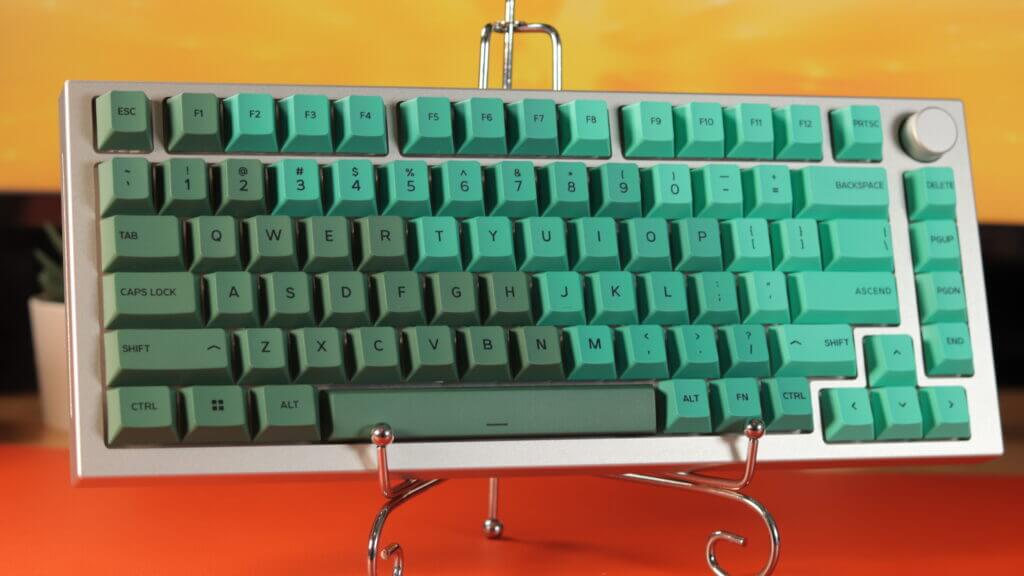
The GMMK Pro is a game-changer in the world of custom mechanical keyboards. It is also one of the best 75% keyboards that are widely available and in stock.
Glorious is known for shaking things up in the community, and the GMMK Pro is no different. The GMMK Pro has a full-aluminum case with gasket-mounting, case and plate foam, pcb-mounted stabilizers, an encoder knob, and South-facing LEDs.
All of the keyboards on this list have a rigid tray-mounted case, but the gasket-mounted case has a flexible, dampened typing feel that can be much more rewarding.
The extra case and plate foam makes typing sound better by dampening and getting rid of metallic resonance and hollowness that could otherwise be heard when your switches are oiled and stabilizers are changed.
For the best experience with no rattles, the stabilizers that come with the kit are PCB-mount screw-in stabs.
More and more keyboards have encoder buttons, which is a good thing. The encoder knob that comes with it is useful not only for controlling the volume and media, but also for controlling efficiency and workflow. The encoder knob can be set to do things like zoom, spin, pan, scroll, and scrub to make work and play more efficient.
The GMMK Pro really stands out from the rest because of its LEDs that face south. Cherry-MX style switches were not meant to be North-Facing when they were first made. This makes it hard to type on the Home row with Cherry-profile keycaps when the switches are North-Facing.
When a PCB has LEDs that face south, the problem is solved, and bigger Cherry-profile keycaps can be used without interference or collision.
Even though it might not be the best for fans of backlit keycaps, the GMMK Pro is clearly in the enthusiast space because it has South-facing LEDs, quality materials, and a gasket mounting system.
Epomaker AK84S

The Epomaker AK84S comes in a few different styles, but one of them looks and feels like no other keyboard I’ve ever used.
I got a model with a nicely rounded shell made of clear plastic and colorful silicone-topped keycaps (below).
This made the keys feel unusually soft and gave the keyboard a very interesting look. I’ve never been asked more questions about a keyboard than when I took this one to a neighborhood café after the lockdown.
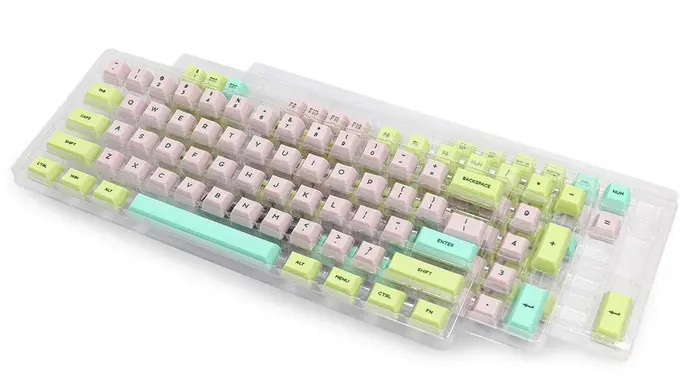
The AK84S is a good keyboard in all other ways, except for how many ways you can change it. It comes with Gateron’s optical or normal mechanical switches, has a Function layer for extra controls, can switch easily between Mac and Windows configurations, and can be used wired via USB-C or wirelessly via Bluetooth 5.1.
There is also RGB backlighting, which can be controlled on the keyboard or in software and can be seen through the acrylic case if you choose that version. You can also choose the more popular plastic and aluminum frames.
Even though a lot of the keyboards in this list have unique features, the AK84S is still able to stand out.
Niz Plum Micro84
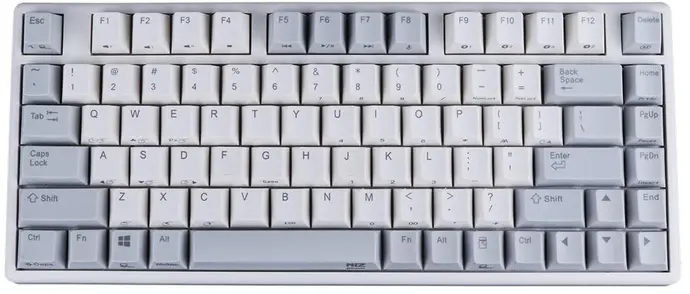
The Niz Micro84 (sometimes called the Plum Micro84) brings something new to the table: electro-capacitive switches that blend the soft feel of rubber dome keyboards with the accuracy and durability of mechanical keyboards.
You may have used or heard about these switches on boards like the Topre Realforce or Happy Hacking Keyboard (HHKB), which are known for having a soft and nice typing feel. Obviously, both of these models are very expensive, but the Micro84 is a lot cheaper.
Aside from its unusual switches, the Micro84’s long list of features is impressive. This is a Bluetooth keyboard that can also be used with a wire. It has many choices for backlighting, from no backlighting to full RGB, and the Fn layer gives you access to a huge number of functions.
There are a lot of legends on each keycap, which makes the keyboard look a little busy, but it also means you don’t miss out on anything. There are settings for the mouse, volume, media, backlighting, numpad, Bluetooth connections, and much more.
All in all, the Micro84 is a unique keyboard that’s worth trying, especially for typing and programming, even though you won’t be able to change it much after you buy it because its switches are different and its software can’t be changed.
